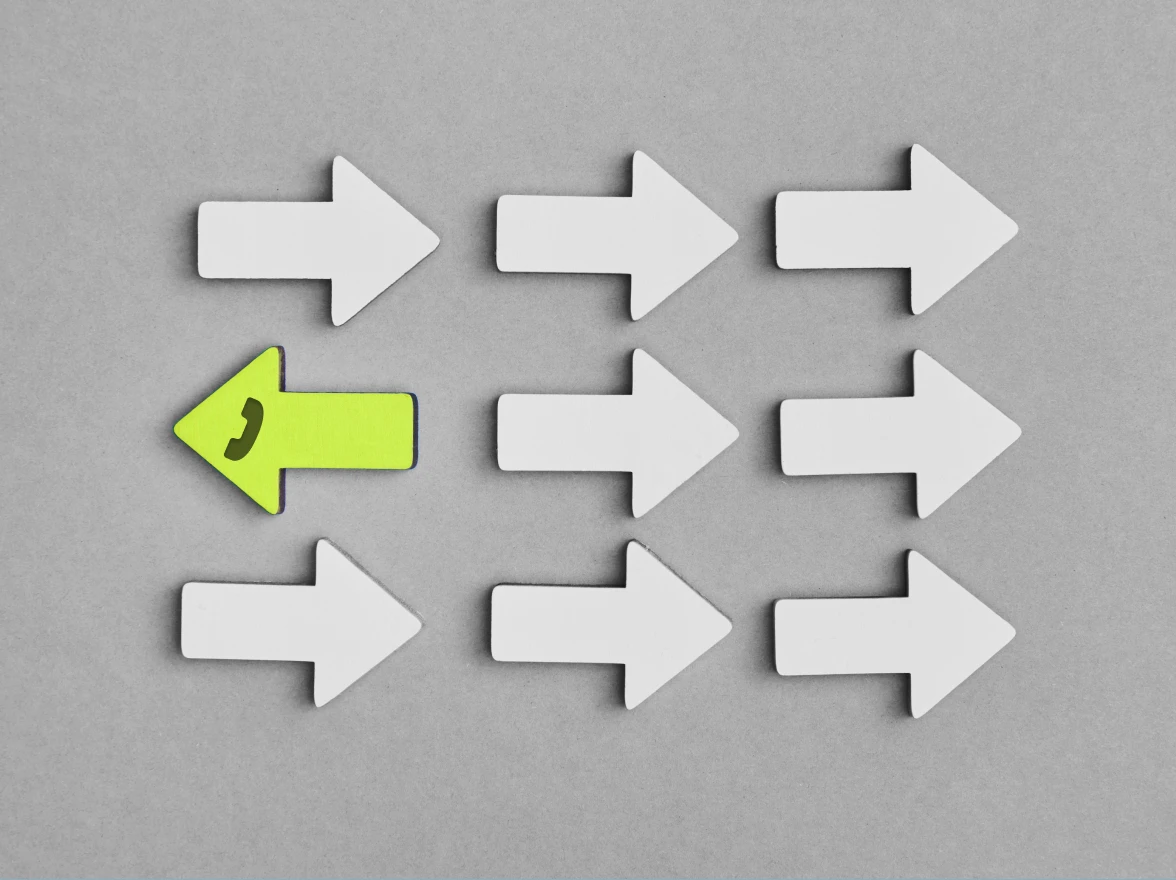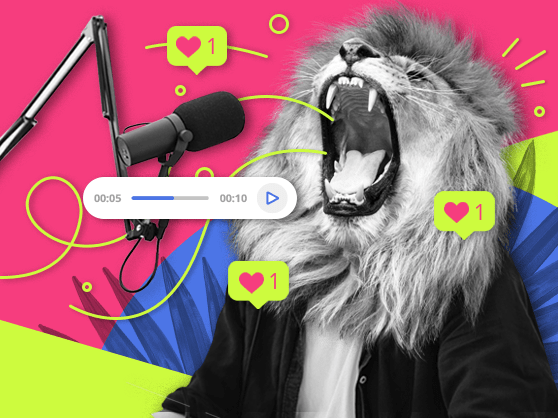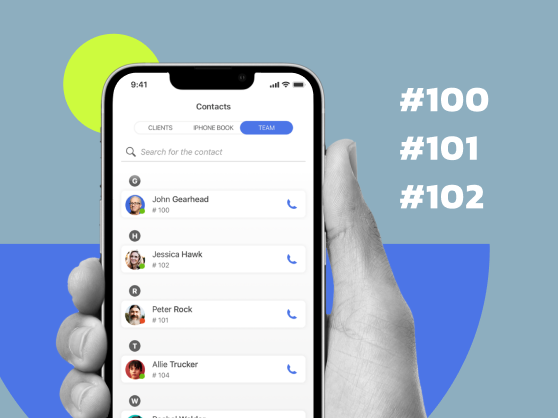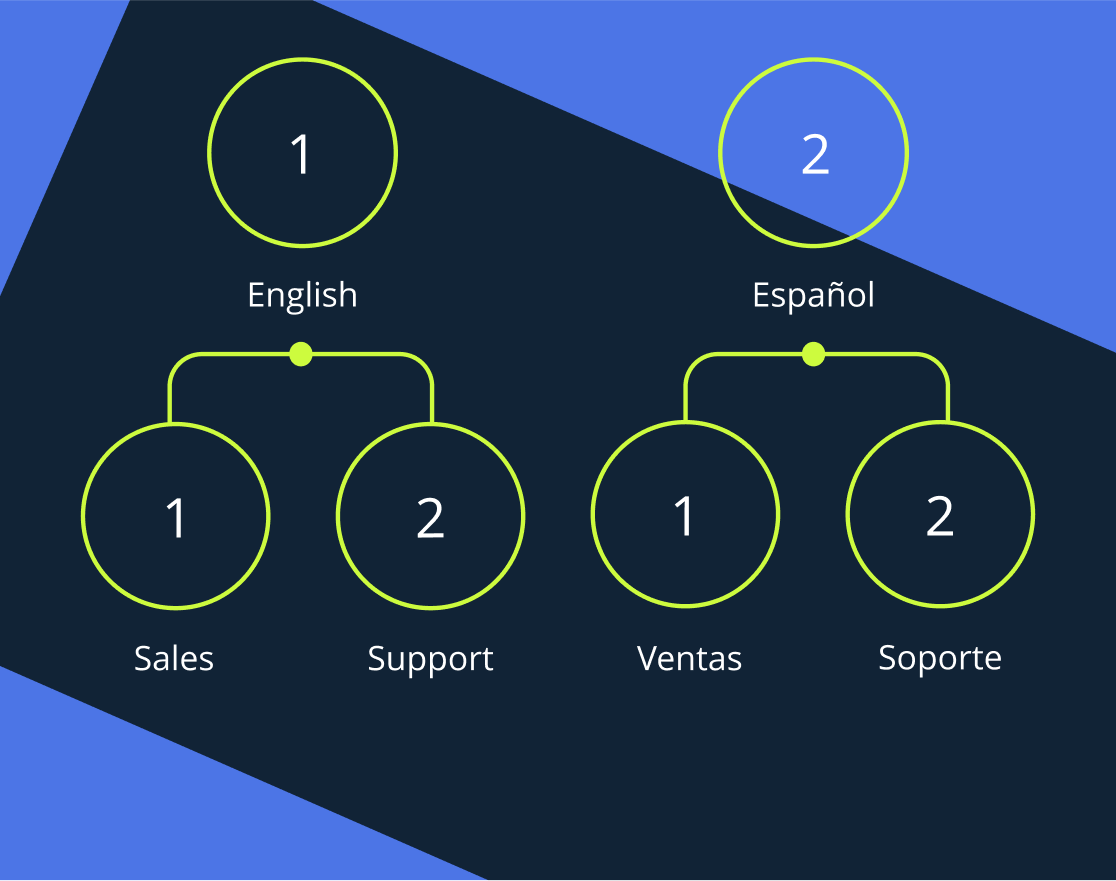Having to worry about angry callers on hold can be a thing of the past. With a queue callback system, you can have an elegant way of helping your callers be heard – and of helping your agents have some breathing room.
- What is queue callback?
- How does queue callback work?
- Benefits of queue callback
- What metrics does the queue callback have a positive impact on?
- Queue callback best practices
- Use cases
- Are there any downsides to using the queue callback feature?
- Optimize customer journey outcomes
What is queue callback?
Queue callback (QCB) is a telephony feature that allows you to offer customers waiting in line the ability to get called at a later point. By doing so, they “drop out” of the line, hang up the call completely, and are called back at a certain set point in the future. It’s important to keep in mind that this feature is often called by many names: customer callback, automatic callback (or automated), and virtual queueing.
This call center software was developed for an obvious reason: no one enjoys waiting on hold. You can dress it up with nice music or news about sales, but at the end of the day, waiting is no fun. This helps customers avoid that entirely.
How does queue callback work?
When customers call, they wait in a queue. This is not abnormal. But when call volume gets high, this feature can help. The software offers callers the chance to opt for the callback option. When that happens, they can hang up and their spot is “saved” by the system, continuing to queue virtually. When a customer service agent is next able to make a call, and their spot comes up, they are then called.
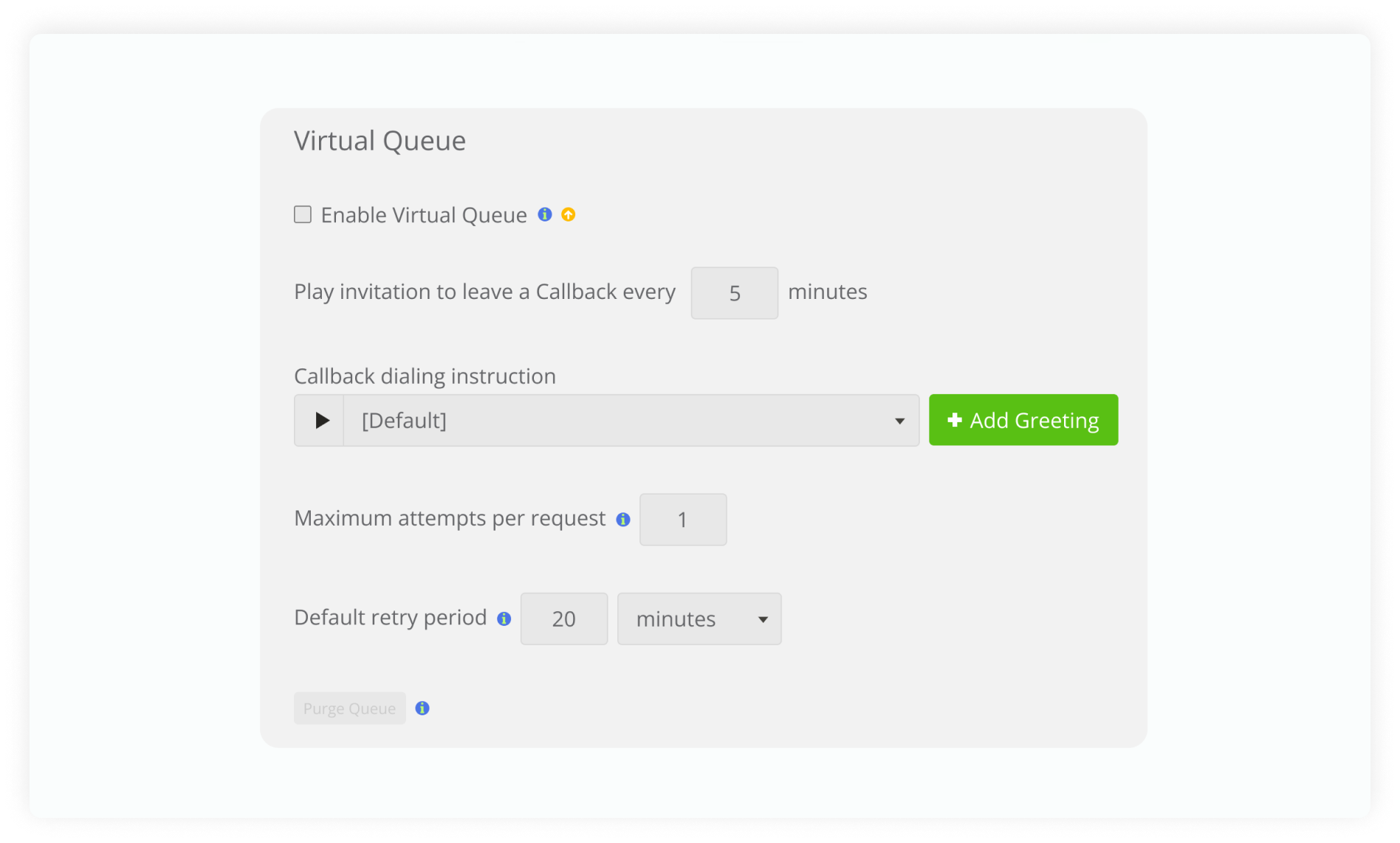
Benefits of queue callback
Your agents are overworked
Sometimes your agents can be absolutely flooded with calls, with way more than one call in queue. Maybe callers heard about a new service, maybe you have a sale, or maybe it’s the holidays. Either way, when things are too chaotic, a queue callback can help give them some breathing room by allowing them to take calls a little slower or to call someone back when they have a moment, instead of when it’s forced on them.
You have lots of callers
On the other end of the above, in some cases agent overwork means callers are waiting. And when you have lots of people on the line, it can help the callers themselves – who may not have expected to have to wait on the line, and may have had other things to do – if they can hear a queue callback message letting them know that they can simply talk another time.
Help your agents work more effectively
Letting agents call at their pace does not just help their mental state – it also helps them to provide better service. If someone has had to wait in a queue for a really long time, they are going to feel frustrated if they get to the end of that queue just to be treated like a number. But it’s not your agent’s fault if they need to rush through tons. This lets each agent provide good service.
Help your call center agents come prepared
Virtual queuing will not only help your agents be able to provide better service than they otherwise would have, but they also have the chance to optimize queue callback potentials by doing their research ahead of time. MightyCall offers services like notes, which allow agents to leave information (as per the name) about callers. With more time, agents can read those ahead of time to get a grasp on what they are getting into.
Come across as more serious
Nothing seems more unprofessional than a company with a long queue and hurried agents. But when you use this feature, the system comes alive in a way which makes your company seem like it has everything under control.
What metrics does the queue callback have a positive impact on?
There are various call center business metrics that customer queue callback can have an impact on.
Net Promoter Score
We decided to lead with this because it is arguably one of the most important. NPS concerns the likelihood of a customer deciding to recommend your services to folks they know. It is incredibly important – if people will not recommend your company, then you won’t have a new business. With an organized and effective callback feature, you can help to improve your NPS.
Agent Utilization Rate
This concerns how much time your agents are “utilizing” when they are on the job. The benefit here, when you use a queue callback software, is obvious: you give your agents the ability to utilize their time more effectively. They can take a long time with complex customers and get through other ones more quickly. This will in turn raise your AUR – improving this metric.
Cost Per Call
This one may seem less obvious at first: how much each call costs is not directly impacted by hitting QCB thresholds, or by any real queue callback function. Or is it? The thing is, wait times are, when it comes to a business, literally money: and how you use that time can gain or lose you money. Helping to finish calls more effectively can therefore lower your cost per call.
Customer Effort Score
The more work a caller has to do in order to get the help they need, the worse the score here. It’s pretty straightforward. And it’s pretty straightforward how requests for a callback can help. By letting callers not have to wait forever on hold, they have to make less of an effort; they simply can hang up, do whatever else they want to do, and then they get a call with the answers they need.
Queue callback best practices
This is an intuitive system, but there are ways to use it that can particularly raise its potential for helping your call center.
Do not offer it too often
We made this point above, but it’s worth reiterating: it is crucially important to not push the option too much. If you do so, it will seem like you are really crunched for time, which can come across as unprofessional and will frustrate callers, damaging their customer experience.
Do not make callers wait multiple times
If someone has elected to opt for a callback request, they are entering a separate queue. When they get to the front of that line, there should be absolutely no chance they get put on hold again. If they are supposed to get called at a certain point, it needs to happen; otherwise, they will feel like they were fooled.
Use recorded audio to answer easy questions
Modern services like MightyCall allow you to record your own audio (or to have professionals do so for you). You should take full advantage of the ability to create a hold message, and should see it as an active FAQ page. Answer any of the easy stuff – hours of operation, new sales, rules on returns – so that some folks may not need to be on the line in the first place.
Make sure your agents are prepared
Mandate the use of call notes, make sure that breaks are organized and agents are not just taking the phones off the hook to not do the job. When the caller’s turn finally comes up, the worst thing would be an unprepared call center agent or them staying on hold even longer. That’s why quality management demands that you train your agents to be ready. People are patient, but only to a point. The automatic callback can help with that, but it cannot solve the problem for you entirely.
Take advantage of statistics
When call statistics are available to you, you should use them. Which agents are the quickest, how many calls are answered, how many people hang up without answering their callback later (even if they have engaged the queue callback services) – these can all seriously improve your business over time. You should utilize them.
Use cases
Financial organizations
People have to call banks for everything. Maybe they need to repay a loan, or maybe they need to check for fraud in their account. But whatever the reason, it’s usually important, and it often needs to be addressed quickly. With the queue callback feature, you can effectively deal with each caller in an orderly and professional manner, befitting a financial organization.
Call center operators
Call centers are frequently swarmed with customer calls. It can be very frustrating! But this is why lots of folks use queue callback in call centers. This helps smooth out what can be a massive amount of calls coming into sometimes understaffed contact centers, releasing pressure in what can otherwise be an extremely high-stress job.
Immigration services
People need to be able to contact the government. It can be for passports, it can be questions about green card application statuses – there are lots of things people need to ask. And there are often tons of people who need to ask these questions, with some answers requiring detailed responses. This feature can help smooth that over and ensure that no one feels that their government has not heard them.
Are there any downsides to using the queue callback feature?
There are obviously a ton of benefits to using a callback queue, whether you work in a contact center or in a warehouse. But there are, admittedly, some things to keep in mind when using it.
Customers might feel pushed off the line
For starters, the entire concept revolves around asking callers if they want to get off the line and be called back later. This is, of course, well-intentioned; even with soothing music beforehand and a kindly recorded voice message offering their entry into the callback queue, some particularly irate callers may feel essentially “shoved off.” If they refuse the option – and it’s offered to them repeatedly – it can potentially cause you blowback, and can increase your call abandonment rate.
A simple solution here can be to simply not have the system offer them the option too often. You should not simply shut the option down – that’s a bad move. But at the same time, you do not need to constantly suggest they use it.
Your agents may not otherwise have time to prepare
If their schedules are backed up and the phones are ringing off the hook, your agents may not be ready for each call. This can be the case even with queue callbacks, as agents will still call without inherently knowing what the call history of the person is.
Here, other features can come into play to help out. We already mentioned notes, but there are many others, like call whisper, which can allow managers to speak to agents on a call without the person on the other end of the line knowing.
Customers with more pressing issues may hang up
Maybe they are feeling nice, or otherwise do not realize that there might still be a wait for a while. Either way, you could get the result of poorly weighted callback requests, with the significant ones that need to be addressed quickly being the ones that are not answered more quickly.
A way to fix this is to have the audio message, which offers the opportunity for a callback, suggest to people who have non-time sensitive issues to request the callback. This will not filter everyone, of course; some folks will stay on regardless. But it will likely help thin things out.
Optimize customer journey outcomes
Obviously, allowing a customer to receive a callback is not the only piece of the puzzle of how telephony software can help you provide fantastic service. It certainly helps by reducing hold times, de-stressing and empowering your agents, and letting callers have more of a say over when they get to talk – but it’s not everything.
It also takes dedicated support staff, a world-class security system, incredibly high uptime, and a laundry list of features that are second to none. MightyCall offers all that and more – give it a go!




